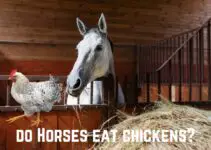Every experienced dog parent will tell you that their furry friends eat just about anything – even objects that don’t look any close to anything edible. Disposable razors, lithium batteries, garbage, cloth, dirt, paper… and the list continues.
So yes, if your dog ate a light bulb, that’s no surprise. It’s something bound to happen with any canine – the least and the most intelligent alike. And when that happens, it’s likely to stir up fear and worry in every loving pet parent.
But fret not – this article will guide you through what you should do and how to manage the situation. Keep following.
Contents
What Should I Do If My Dog Ate a Light Bulb?
After your dog eats a light bulb, how you should act will depend on the size of the bulb relative to that of the pup. If you suspect the light bulb is way too large for your canine’s digestive tract, contact the vet immediately.
You see, the potential danger of dogs eating light bulbs doesn’t only come from the chemicals that go into the bulb. It can also emanate from glass fragments. As the bulb moves down the gut, a sharp edge could scrap your canine’s gastrointestinal (GI) tract.
Small dog breeds like Yorkies and Chihuahuas have narrower guts than large pups, for instance, German shepherds, Rottweillers, and the likes. Hence, after the little fur babies swallow something potentially dangerous like a light bulb, the glass shards will likely come into contact with their GI walls as they move through it, increasing the chances of a puncture.
Where the light bulb seems way too small for your canine’s gut, there’s no need to worry much. You can successfully help your dog pass it through their digestive tracts without causing any harm to them, and that will come to you in detail later on in the article.
Where you aren’t sure of the size or number of light bulbs your dog ate, take your canine to the vet. An X-ray will help capture the size and the number of light bulbs they swallowed on a radiograph. After that, the dog doctor will advise on the way forward as they see appropriate.
And be cautioned – after such an occurrence, avoid inducing vomiting. You see, something sharp like a light bulb can tear your canine’s gullet or stomach when contracting to force it up. Just avoid it.
So, one thing to worry about after your dog eats a light bulb is an internal injury. But other than the risk of mechanical damage, is there any other danger? Now, the next section is all about the potential toxicity of light bulbs. Keep following to discover more!
Are Light Bulbs Toxic to Dogs?
Yes, light bulbs can be toxic to dogs. However, light bulb toxicity in your canine will depend on the type they ate and the amount. So yes, other than the risk that comes with the glass shards, there’s another reason to get worried.
To break it down for you, we’ve said light bulb toxicity in dogs depends on;
- The type of light bulb
- The amount eaten
Type of Light Bulb
Here, we will look at the most two common types of bulbs:
- Compact Fluorescent (CFLs) light bulbs
- Light-Emitting Diode (LED) light bulbs
The CFLs use tungsten filament, initially known to be non-toxic. However, after reevaluation, tungsten has been found to be hazardous to canines. But again, the amount of it in CFLs is way too small to inflict anything serious on your pet.
CFLs also have elementary mercury, a substance that’s just as dangerous to dogs as to humans. Like tungsten, the amount of mercury in CFLs is small and will most of the time not trigger anything. Again, vet toxicologists claim that the mercury in CFLs isn’t in a form that’s easy to be absorbed in the body.
On the flipside, LEDs don’t contain mercury but are neither safe for pets. They have lead, arsenic, iron, copper, and nickel, all of which aren’t safe for humans, leave alone our furry friends.
And just so you know, of all these elements, lead poses the biggest threat to canines. The concentration of this metal is high in LED bulbs. In fact, that’s what makes it more dangerous than all other metals in LEDs.
The Amount
The amount eaten is the other factor that determines light bulb poisoning in dogs. As we’ve seen, lead, tungsten, mercury, and most other elements in light bulbs are only dangerous in large quantities. So yes, the more light bulbs a dog eats, the higher the chances of poisoning.
But again, toxicity also has something to do with the size of your canine. Signs of poisoning are more likely in smaller pups than in larger ones. As such, if a small dog eats a light bulb, and especially an LED variety, it’s best to keep a keen eye for any signs of lead toxicity, and that takes us to the next section.
What Are the Signs of Lead Poisoning in Dogs?
The signs of lead poisoning in Fidos can vary from one dog to another. If your canine gets exposed to an amount of lead large enough to cause manifestations, you can expect;
- Lethargy
- Vomiting
- Diarrhea
- Seizures
- Blindness
- Poor appetite
- Abdominal pain
- Hysteria
Once you notice any of these signs, visit the vet immediately. According to PetMd, lead poisoning is an emergency, so medical attention should be immediate.
The vet will perform a complete physical examination involving a blood test, urinalysis, and biochemistry profile. All that will be to diagnose whether indeed the signs are from lead poisoning.
Where your canine already exhibits the majority of lead poisoning signs, most of the vets will opt for a more specific test to determine the level of lead toxicity. Treatment is usually through chelation therapy or gastric lavage, but your vet can use a different approach.
Can It Cause Blockage in the Dog’s Gastrointestinal Tract?
Yes, swallowing a light bulb can cause blockage in the gastrointestinal tract. But again, much more like gastrointestinal punctures, intestinal blockages are more likely in smaller pups than larger ones.
Where there’s a blockage, the signs include but are not limited to;
- Loss of appetite
- Lethargy
- Dehydration
- Abdominal pain
- Diarrhea
- Vomiting
And with that said, is there anything you can do to help prevent blockage and gastrointestinal perforation from happening?
Definitely! Here’s how to go about it;
After your canine eats a light bulb and you don’t see any need to visit the vet, offer them certain foods to help encase the bulb and prevent it from coming into contact with the walls of the gut.
A Vaseline sandwich is a perfect option. It’s simple – take a slice of white bread, spread Vaseline on it, cover with a second slice, and feed your dog small pieces bit by bit. The bread will embed the light bulb in the wad of dough, preventing any sharp edges from scraping the gut. The essence of Vaseline here is for lubrication.
But wait – “Will my dog eat bread with Vaseline?” Well, you may ask. Now, if you are wondering whether your dog will eat a Vaseline sandwich, then rest assured they can. A canine that willingly ate a light bulb won’t have issues with eating a treat smeared with Vaseline.
Some vets also recommend that you feed your dog bland food like white rice. The most recent method suggests the use of tiny cotton balls. However, they all work the same way as bread – encasing the foreign object as it passes through the gut.
Assuming you use a Vaseline sandwich, you’ll still need to switch to a bland diet until the light bulb passes. Offer bland meals in smaller portions but more frequently, preferably 4 to 6 times a day.
The light bulb will usually take at most 4 days to pass. After that, don’t switch to regular food all at once. Stick to the bland diet, but introduce your dog’s normal food gradually when simultaneously reducing the amount of bland food.
You want to keep playing safe just in case there are some pieces of glass remaining. It may take you a week or so to make a complete switch to the dog’s regular food.
Can My Dog Get Sick After Eating a Light Bulb?
Yes, your dog can get sick after eating a light bulb. The causes of sickness can range anywhere from lead poisoning to gastrointestinal obstruction and gut puncture. Either of these conditions or any other that you may see in your dog needs immediate medical attention.
But again, unless you have a small dog, and especially relative to the size of the light bulb, your canine will likely not get sick from eating a light bulb.
Nonetheless, whether you see any signs of sickness in your dog or not, give them sandwich bread or at least bland food to mitigate the risks of issues happening later on.
A light bulb is a foreign object, so it remains dangerous until discharged. So yes, don’t think your dog is too big to develop anything serious from eating a small light bulb. Accidents happen to big and small dogs alike.
How To Prevent Your Dog From Eating Light Bulbs Again?
After your dog passes the light bulb, you must find ways to prevent your dog from eating light bulbs again. Light bulbs can be very dangerous to dogs, and dog’s ingesting them is enough to cause worry in every pet parent.
You can keep your dog from eating light bulbs (or any other foreign object) by feeding them on time. Dogs are routine animals. They want to eat at the exact time every day. So yes, always stick to time.
Again, keep all light bulbs away from your dog’s reach. They may not look like something that your dog can be tempted to eat. However, as we already said, our paw friends will eat even things that don’t look anything like treats.
Finally, don’t underestimate the value of exercise. Find time to take your dog out for walks and runs. If you can’t offer any of these for whatever reason, spare some minutes to play with your Fido. A Tug-of-war is one game canines love. The goal is to keep your dog stimulated and his energy levels low. That will promote proper behavior.
Conclusion: Can Dog Eat Light Bulb?
Dogs swallowing light bulbs isn’t something strange. However, it can be dangerous, especially for small canines. A light bulb can cause lead poisoning, gastrointestinal obstruction, or gastrointestinal tract puncture in pups.
As such, visit the vet if you suspect the size of the bulb will likely cause issues for your dog or when you see any of the signs that something isn’t well. Where no signs at all, help your dog pass the bulb safely out of his gut by providing the suggested foods. It may take a few days, so be patient.







